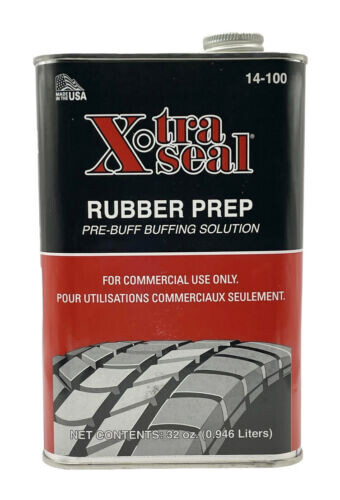Ever used rub-o-matic?
Nope. I looked up the SDS at the Tech website. It’s heptane, and that should dissolve the surface rubber. In this case, that’s a good thing. Rubbing it on should proved a good, clean, unoxidized rubber surface for bonding your patch. Here’s the SDS.
Also, I’d wear gloves when wiping it on. Either nitrile or vinyl are acceptable.
Thanks. I looked it up. I had never heard of it. I bought a batch of bicycle tube patches. The instructions recommend it. I thought it was a bad translation at first. The sites I saw recommended it for automobile tires, not bicycle tubes.
This is the product used by tire shops to remove the film from the inner liner of tires prior to buffing/patching. It is available in smaller sizes.
That’s also heptane, mostly (all?). I’m sure that either product would be acceptable.
If I responded to a post titled Rub-o-Matic I can guarantee I’d be banned forever.
Isn’t the conceptual model of gasoline a mixture of octane and heptane, the octane number being the percentage of octane, the rest heptane? I know that’s not the reality - one can get fuel with a higher octane number than 100, for instance. Would gasoline work as well? Does rub-o-matic have something in it to make it safer?
AutoZone has only quarts.
You just did.
Has nothing to do with the actual composition. Look up gasoline’s Wikipedia article.
As I wrote, that’s not the reality. Isn’t it the concept?
Quoth the Wikipedia page,
‘The most common type of octane rating worldwide is the Research Octane Number (RON). RON is determined by running the fuel in a test engine at 600 rpm with a variable compression ratio under controlled conditions, and comparing the results with those for mixtures of iso-octane and n-heptane.’
The mixtures of iso-octane and n-heptane are standards against other combustible materials are measured. Any other fuel that combust like an 89 octane mixture of iso-octane and n-heptane is rated at 89 octane. I’m not familiar with the chemicals here, but I do know haw standards work.
Yes. As I wrote before, octane number refers to the concept of a mixture of octane and heptane, not the reality of anything sold as fuel.
Actually, this is what you wrote:
Sounds like you meant to write:
“Isn’t the conceptual model of the gasoline octane scale a mixture of octane and heptane, the octane number being the percentage of octane, the rest heptane?”
The octane number is derived by running the fuel in a test environment and comparing it to standards comprised of up to three known chemicals. So it is representative of the fuel you are dispensing into your vehicle…
How is octane measured?
The standard means of testing octane is with an octane testing engine. This test is similar to the way the mass of an object can be determined by comparing it to objects (references) of known mass on a balance scale. Primary Reference Fuels (PRF) of precisely known octane are formed by combining iso-octane, heptane, and other well-known standards such as toluene. These PRFs are used to bracket a given fuel sample to determine the pressure at which similar knock intensities are observed. This measurement is taken by adjusting the octane engine’s cylinder height, which changes the compression ratio/pressure in the engine until the knocking reaches a specific intensity level.
OK I get the the rating at the pump is RON + MON /2, but this is what always gets me…
Owners manual says:
Octane rating (Unleaded gasoline)
87 (Research octane number 91) or higher
but it never shows what MON is, so does that just mean that you use the Yellow Button 87 octane at the pump??
Does that mean that MON is 84 if RON is 91 and that makes it 87 at the pump??
I am running 87 in the truck with no issues at all, even ran a full tank of 93 (purely by accident lol) and my fuel mileage stayed the same and my buttometer couldn’t feel any difference either…
TN has 87, 89 and 93 at the (standard) pumps…
PS, I’m not an engineer, and even less a chemist (or whatever it’s called), Heck, I barely know what H2O is, so please put it in simple terms lol…
EDIT: OK so I googled it and then asked the AI (search assist) thingy and this is what it said, which lines up with what I said, so either I had it right or we (AI and me) are both wrong… lol
Shell’s 87 octane fuel typically has a Research Octane Number (RON) of about 91 and a Motor Octane Number (MON) that is usually 8 to 12 points lower than the RON, making it approximately 79 to 83. However, specific values can vary by region and formulation.
Hey check it out, I got off subject and kept it 100% vehicle related… ![]()
The conceptual model of gasoline used to set a standard for the octane number - for what other reason would one make a conceptual model of gasoline? It’s a practical substance, not a chemical formula.
removed content…
Your original post was unclear to this 40+ year chemical/petroleum engineer. I think we agree on your intent.


